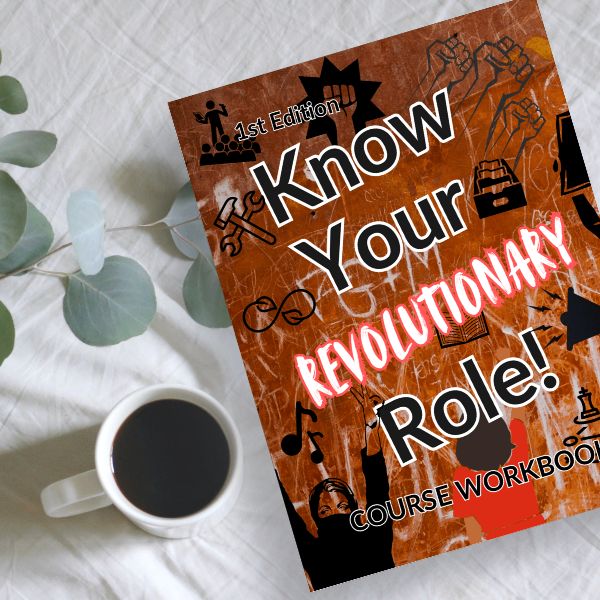
Ways to Use "Know Your Revolutionary Role" Workbook: A Guide for Readers, Families, and Groups
Share
So, you’ve got your copy of Know Your Revolutionary Role—now what? This isn’t just a book to read and set on a shelf. It’s a guide, a conversation starter, and a tool for action. Whether you’re diving in solo, with family, or as part of a larger group, here are some ways to make the most of it and even build community while you're at it!
1. Self-Paced Study (For Independent Readers)
If you're working through this book on your own, treat it as a journey, not a race. Take your time with each section, reflect on the prompts, and try out different action steps. Keep a separate journal to track your thoughts, progress, and ideas that spark inspiration. You don't "graduate" from this work, so take your time and learn about yourself and how to take action in the world.
2. Family Discussion & Learning Together
Several readers have shared that they’re going through this book as a family project, which is an incredible way to build shared understanding and action. Set aside time each week to go through a section together, discuss important points, and decide as a family how you can contribute to change. This is especially powerful for parents who want to raise socially conscious kids!
3. Book Clubs & Community Groups
Gather friends, neighbors, or colleagues and form a book club focused on social change. Use the book club discussion guide (available for download!) to guide conversations and help each other discover strengths, roles, and ways to take action together.
4. Classroom & Educational Settings
Educators can use this book as a learning tool to introduce students to activism, movement-building, and critical thinking about social justice. Group activities and discussions will help students find their voices and roles in making change.
However you use it, the goal is the same: engage, reflect, and act. Let this book be your guide—and then take what you’ve learned into the world. You got this!
